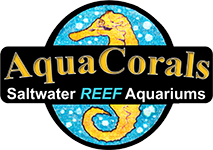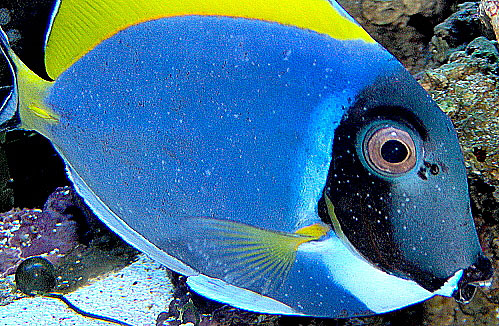
Ick - The Truth About It

Ick, short for Ichthyophthirius, is a parasite found in EVERY aquarium. Let me repeat...Ick is in all of our tanks all the time. When a fish is infected it is commonly seen as tiny white dots about the size of sugar grains. Every hobbyist, whether freshwater or saltwater, has either heard of, has experienced or will experience Ick.
The Ick parasite is like the cold virus is to human beings. Why don't we walk around with a cold all the time? When our immune systems are healthy it is our defense against being infected. The same goes for fish & Ick. Ick is present in all oceans but in such low numbers (due to the vastness of the oceans) the fish can easily ward off infections. In our aquariums however, the dense population of fish in an enclosed environment allows Ick to quickly take hold & spread.
What causes Ick? Quite simply ... stress. Stress lowers a fish's immune system making them susceptible to infestation. Let’s look at the Hippo Tang who has a reputation for being an “Ick Magnet”. Why is this? Because this fish has a darker color than most which shows the whiter Ick spots better. Also, they have a more nervous personality than most fish & nervous = stress = lowers the immune system. Stress can be caused by one or more of the following: collection, transportation, poor handling & holding systems, improper acclimation upon receipt, poor water quality, (including contaminants in the water we cannot test for!!), improper diet, bully tank mates, stray electricity in our water ... and the list could easily go on.
Again, find the cause(s) of stress & remove or fix it. If yours is a case of transportation stress (you just bought a new fish & introduction to it's new home stressed it) and only a couple spots have appeared on the new fish ... I would not worry. As long as any infected fish is eating and you don't see the Ick spots increasing in numbers, the fish can easily get over the infection. Think of it like us humans either having the sniffles or full blown pneumonia. A couple of spots (you can count them) = sniffles. Peppered with spots (can't count) = pneumonia! If it's not transportation/acclimation or bully fish stress then look at your system! Again, if your tank is fully cycled & setup in a healthy fashion, the temp is about 78 & the salinity about 1.026 then the cause should never be anything like an ammonia or NitrIte spike. Unless, of coarse, you just added a ton of fish at one time & overloaded your bacteria's ability to handle the new bioload!
How to remedy Ick? First let me stress that prevention is the best medicine but if you see Ick on one or more of your fish you need to identify the stress & eliminate it immediately. Also of huge mention is that as of this time I write there are NO known safe & effective medicines we can use in a reef aquarium. Be careful of false claims!
There are those who suggest that freshwater dips will help. I disagree! Understand that the Ick parasite is protected under the fish's slime coat. It's only when the parasite goes off the fish that any remedy will work. Freshwater dips IMO only make matters worse! Imagine the additional stress to the fish from being netted then dumped into freshwater only to be placed back into the aquarium ... now with an even lower immune system!!
If your fish is peppered with white spots (way too many to count) you may want to consider intervention. Having an observation tank running that is separate from the DT is very useful in not only resting & conditioning newly acquired fish but also in providing therapy if necessary. By therapy I mean hyposalinity. Hyposalinity is where we lower the salt level in our tanks to a therapeutic level, usually between 1.014 & 1.016 and raise our tank temperature to about 80 degrees. Understand that the Ick parasite cannot tolerate salt levels below a certain point. Lower than they can tolerate kills them! Raising the temperature actually speeds up the life cycle of the parasite making it come off the fish faster. Ick is doing the most damage while on the fish.
If you decide that hyposalinity is needed then you will want to remove at least 10% of the observation tank's water & replace with fresh water. The next day check the salinity & adjust as needed to get it to the therapeutic level. Leave the tank/fish in hyposalinity for 2 weeks. If no spots are seen at that time you can increase your salinity slowly by replacing evaporation with saltwater.
IF you do not have an observation tank & your other fish are peppered in Ick then you can do the same method to your DT as described above. This is super hard on all inverts & can kill them! This is a last ditch effort only!
Again, understand that hyposalinity is hard on corals and inverts. Many corals will close during this time & you may even loose coral. I've have personally used hyposalinity many times successfully. There is no quick fix or exact cure. (when a true reef safe cure is developed, someone is going to be an instant billionaire!!) So, again, (& I can't stress this enough) the best method & medicine for Ick is prevention = no stress.
I'll wrap this article up with this fact ... that anyone who has ever visited my facility can attest, ALL of my display fish in ALL of my tanks NEVER have Ick on them. Let me repeat, the fish in my healthy systems (due to my setup & maintenance routine) that have compatible tank mates, which are fed properly NEVER get visible Ick or any other parasites or infections. Some are over 18 years old here! TRUST my 25+ years experience, not only in my own hobby but in serving thousands of people like you!! Contact me with any questions!

